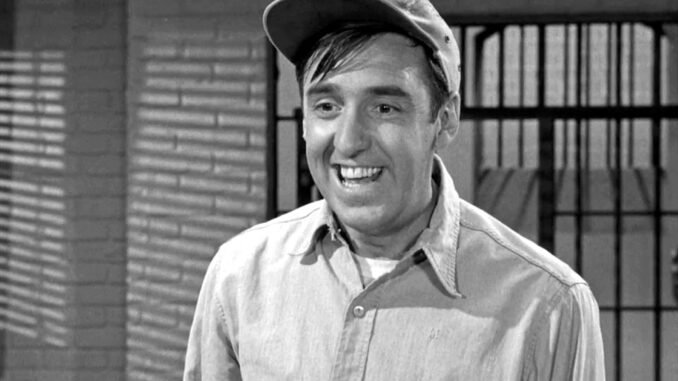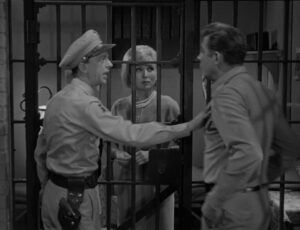
The film features some of Griffith’s best work, and remains an important story for how it addresses the ways in which media can be weaponized to influence audiences. While A Face in the Crowd may not be as well remembered as Kazan’s seminal works, On the Waterfront and East of Eden, the film has revealed itself to be an incredibly prescient one, one that predicted media and political trends which have culminated in a great shift in American cultural discourse. The film, now a part of the Criterion Collection, is being reappraised on the strengths of the lead performance and the thematic content, which doles out a number of warnings America unfortunately has yet to heed.
Lonesome Rhodes is a complicated character. While the Andy Griffith most audiences know and love was a kindly character, most noted for his fatherly qualities and ability to hand down life lessons, A Face in the Crowd shows a different side to Griffith’s acting talents. In an archived newspaper clipping from 1956, Griffith explained that he found the transition from stage acting to performing on film difficult. The main factor was that, in a theatrical production, the emotional arc of the character played out in real time. Griffith compared this to the process of film acting, saying “… in making a movie, you have to be able to turn your emotions on and off like tap water. I found that hard to do.” To quickly find the intense emotions required for Lonesome Rhodes’ frequent outbursts, Griffith requested some old chairs be brought to the set, and he would destroy them in order to prepare for his scenes.

Griffith’s performance was amazing from the outset, but the film works even better if you are well acquainted with his very trustworthy family sitcom persona. As the warmth of Sheriff Andy Taylor radiates through the film’s opening act, it becomes harder to watch Lonesome Rhodes increasingly consumed by rage and egomania. It is akin to the quality of experience you get watching Bryan Cranston shed his goofy Hal Wilkerson persona from Malcolm in the Middle and replace it with the depths of evil he reaches as Walter White in Breaking Bad. Cranston took these characters to their respective extremes compared to Griffith’s work, and Griffith did not have these kinds of expectations put upon him in his film debut, but in retrospect, the effect is quite similar.
Whatever Griffith’s concerns might have been about making the transition from stage to screen, it is clear that he was able to work through them in his own way to deliver this stellar performance. Lonesome Rhodes is perhaps the most dynamic, powerful role of his career. Although it is not the work he is most closely defined by, that honor definitely goes to the iconic sitcom which bears his own name, this film should always be a part of the conversation about Griffith’s talents. You will never see Sheriff Andy Taylor the same once you see A Face in the Crowd.
